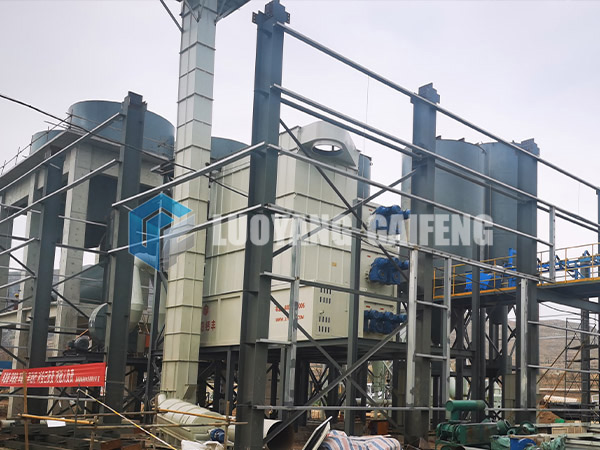Hydrated lime equipment process flow
The technological process of the hydrated lime equipment is to add the raw quicklime from the loader to the silo, evenly add it to the jaw crusher through the vibrating feeder, and crush it to about 30-50 mm. The dust generated during the crushing process of the equipment is introduced into the pulse bag filter outside the workshop by the induced draft fan through the dust cover of the jaw crusher. The calcium oxide powder of the filter should be cleaned once a week.
Hydrated lime equipment adopts a double-shaft stirring structure, which has multiple functions such as stirring, crushing and agglomeration, and self-cleaning. Its unique paddle and stirring formula make quicklime and water mix evenly, react fully, and play a role in the agglomeration generated during the reaction.

The feed port of the digester is designed with a screw feed propeller to facilitate material transportation. In order to prevent the backflow of dust generated during the digestion process, the equipment is equipped with a special steam and dust discharge port, which can be discharged to a special dust removal system through a connecting pipe, and is used with DMC pulse dust removal Q device in conjunction with hydrated lime equipment, which can handle quicklime well dust and harmful gases produced during digestion. Waste dust and lime can be reused after use, and the environment has no dust pollution, which meets the requirements of environmental protection development.
The quicklime crushed by the hydrated lime equipment is lifted by the bucket elevator to the lime bin at the upper part of the digestion tank in the digestion workshop. The quicklime is evenly sent into the digester through the gate valve at the lower part of the lime silo and the weighing feeder (feeding speed is 5t/h). At the same time, water was added to the digester at a ratio of 133603.5 (17.5 m3/h). When the boiler is started, the hot water heated to 80 degrees in the hot water tank can be used in a few minutes (the heating medium of the hot water tank is saturated steam). When the temperature of the digester reaches above 90 degrees, the hot water in the hot water tank can be stopped and digested with cold water (circulating water can be used).

Quicklime and water can enter the digestion tank under the high-intensity stirring of the stirring blades for digestion reaction, and synthesize calcium hydroxide emulsion through hydration. Most of the residue of the hydrated lime plant is sieved through the slag outlet of the digester and the vibrating screen. The slag output is 1642.6Kg/h, and the residue is sent to the slag pool outside the workshop through the conveyor. The water vapor generated during the digestion process is collected by the dust removal hood at the end of the digester and discharged outside the workshop, and then discharged after being treated by the water film dust collector.
The filtered coarse stock flows into the coarse stock tank, and the slurry in the coarse stock tank is pumped into the rotary slag discharger by the slurry. The insoluble ash (120kg/h) separated by the rotary slag remover is sent to the slag pond outside the workshop after being separated by a vibrating screen.
In fact, the mud processed by the hydrocyclone of the hydrated lime production line is about 22% (the flow rate is about 25m/h), and it enters the refined mud storage tank, and water is added to make the calcium hydroxide content reach 20%. Then it is pumped into the cyclization tower at a flow rate of 60m/h. In order to better meet the requirements of the cyclization process, the refined pulp storage tank of the hydrated lime equipment can be heated to 65 degrees for heat preservation, and the heating medium is saturated steam.


